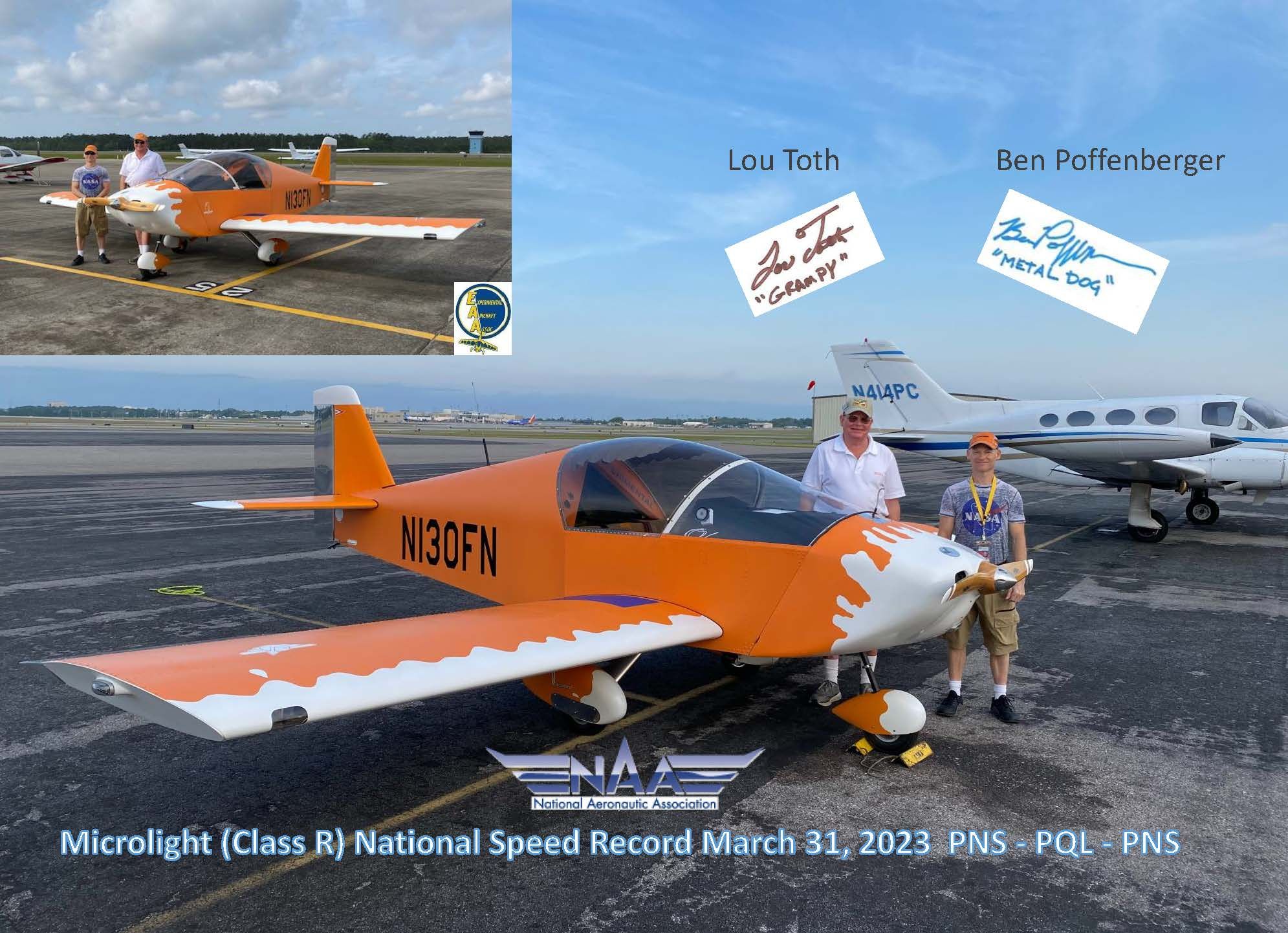
What do a Caudron C.635, a B-52, a Quicksilver MX, and Sonex 1520 have in common? Well, they are all airplanes, and they have either set a world or national Speed Over a Recognized Course record which is unique in setting a “first” in the annals of aviation historical records.
Ever since the first successful heavier than air flights by Otto Lilienthal at the end of the 19th century, and the Wright brothers powered flight success in 1903, aviation records have been made and broken. And thanks to the foresight of aviation pioneers such as the Wright Brothers, Glenn Curtiss, Wiley Post, Jimmy Doolittle, Charles Lindbergh, Amelia Earhart, Chuck Yeager, John Glenn and Dick Rutan, any licensed pilot (sorry students) who has an aircraft, and the persistence to search through the category of records available where they can compete is able to set a national or world record!

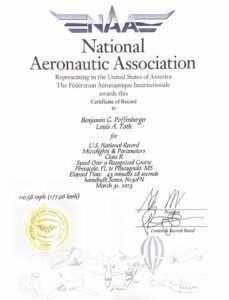 The National Aeronautic Association is the organization for the advancement of the art, sport, and science of aviation and space flight by fostering opportunities to participate fully in aviation activities and by promoting public understanding of the importance of aviation and space flight to the United States. Its forerunner was the Automobile Club of America, which counted some of America’s most influential people among its members—William K. Vanderbilt, Jr., Charles Glidden and Phillip T. Dodge to name a few. These men and several others decided to branch out into the fledgling field of aviation in 1905, founding the Aero Club of America.
The National Aeronautic Association is the organization for the advancement of the art, sport, and science of aviation and space flight by fostering opportunities to participate fully in aviation activities and by promoting public understanding of the importance of aviation and space flight to the United States. Its forerunner was the Automobile Club of America, which counted some of America’s most influential people among its members—William K. Vanderbilt, Jr., Charles Glidden and Phillip T. Dodge to name a few. These men and several others decided to branch out into the fledgling field of aviation in 1905, founding the Aero Club of America.
NAA was incorporated in 1922 as the Aero Club’s successor and continued the original group’s mission of promoting aviation. The ACA and NAA issued all pilot licenses in the U.S. from 1905 until the Civil Aeronautics Act of 1926. Some of the nation’s most prestigious aviation awards are administered by NAA, including the Collier Trophy and the Wright Brothers Memorial Trophy. The Awards & Events department collects nominations and assembles committees to select winners of America’s most important aviation awards annually, presenting them at ceremonies and events throughout the year.
And this year the NAA is hosting the 117th Fédération Aéronautique Internationale General Conference in Dayton, Ohio, and the national Speed Over a Recognized Course certificates for Sonex 1520 were presented at the Opening Ceremony & Awards Dinner on October 25 of this year.
So what makes the records first mentioned unique?
It is interesting to note that the NAA website for Speed Over a Recognized Course starts in 1935 with Gaston Gentin & Andre Robert flying from Paris to Antananarivo at a speed of 94.39 mph, in a Caudron C.635; the first continental US flight in a B-52 in 1962 by Clyde Evely and crew from Seattle to Fort Worth at 552.5 mph; and the first US Microlight record in 1993 by Joseph Clinard from Centerville, Tennessee to Little Rock, Arkansas in a Quicksilver MX at 38.58 mph.
The records by Ben Poffenberger and me are the first dual-crew US National Records, (Pensacola, Florida to Pascagoula, Mississippi & Pascagoula, Mississippi to Pensacola, Florida), only the second US Microlight record in almost thirty years, and if Mr. Clinard did not build his Quicksilver, the first crew-built Microlight to set a U.S. record. I know the Europeans and other countries have many more records in the Microlight & Paramotor classes, but our hope is that our “Hundred Dollar Hamburger” record inspires other American aviators in this class take on the challenge to stand out from the more than 4,600 Speed Over a Recognized Course records! The airport cafe at Trent Lott International is excellent, and I would recommend it to anyone.
Although Ben was able to fly the Pensacola, FL to Pascagoula, MS leg at 110.58 mph, and I was only able to fly the return leg from Pascagoula to Pensacola at 107.13 mph, I’ve always known I’m a little slower than most, but it is not if you win, but do your best at something new & maybe a little uncustomary. We did fly the final descent into Pensacola at 147 kt (about 169 mph) so the controllers could squeeze us in-between the airliners and other traffic, great fun.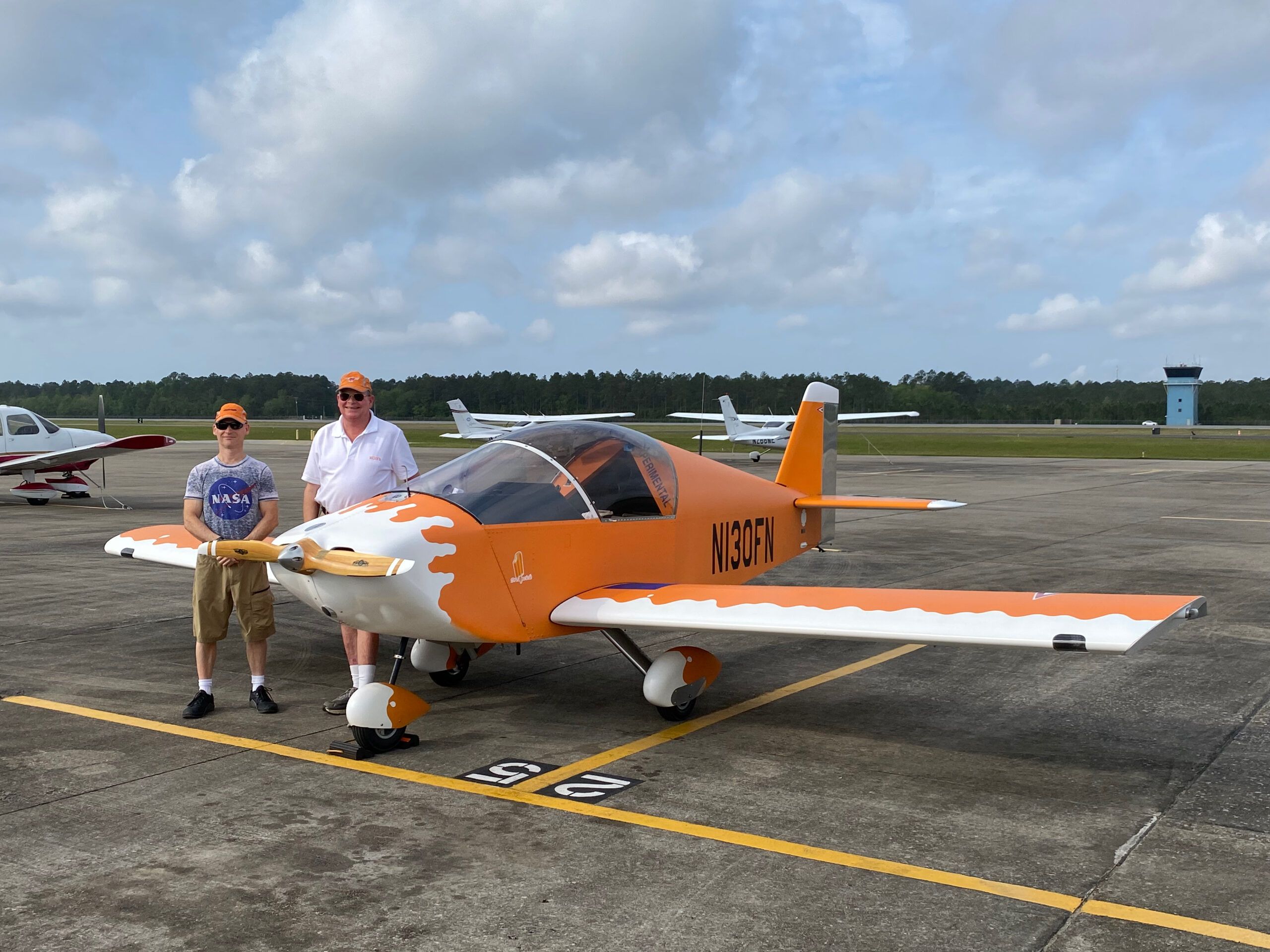
For more information on the NAA, and the various aviation records that are available, visit their site at: https://naa.aero. We wish to especially send a well-deserved Thank You to Mr. Art Greenfield, Director, Contest & Records at NAA for his patent assistance during our “Record Hamburger Run”.
—Lou Toth
Builder’s Log: https://eaabuilderslog.org/?s=ltoth
Sonex Builder News: https://www.sonexaircraft.com/toth-naa-record


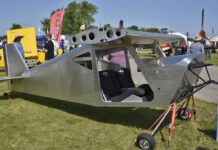
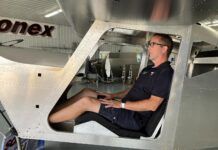


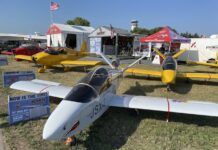



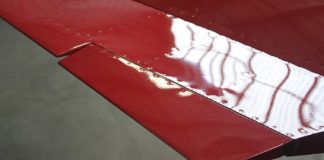
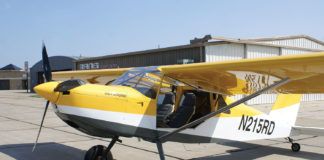
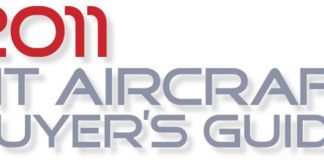
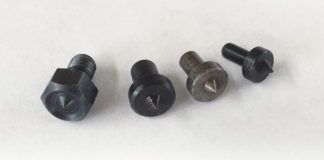
In 1982, Peter Burgher broke & still holds 23 records in his Quicksilver. see https://www.fai.org/records?record=burgher or https://www.eaa.org/eaa-museum/museum-collection/aircraft-collection-folder/1982-eipper-burgher-quicksilver-mx-1
Hi Rudy,
During the summer of 1981, Burgher decided he wanted to fly his MX-1 from his home in Utica, Michigan, to St. Petersburg, Florida, a north-south trip that had never been attempted in an ultralight. His accomplishment was completed as a series of twenty-three C-1a/0 airplane Speed Over a Recognized Course world records which cannot be duplicated today.
While Burgher is to be celebrated for his accomplishments, the current Speed Over a Recognized Course requires: “The minimum distance between the start and finish points for airplane World records is 400 kilometers (249 statute miles). The minimum distance has been reduced to 200 kilometers (125 statute miles) for U.S. National records.”
“To qualify as a record, the certified speed must be equal to or greater than the minimum
steady flight speed (stall speed with flaps up / Vs) of the aircraft. If the minimum steady flight
speed is unknown, the certified speed must be equal to or greater than 100 kmh (62 mph).”
There are many C-1a/0 Speed Over a Recognized Course records in the 1980’s that had speeds as low as approximately 5 mph or less due to intermediate fuel stops which were allowed (to include Burgher Atlanta – St. Petersburg) which probably lead to the rule change above in the 80’s with the following:
“Special Rules for Microlights
U.S. National records for “Speed Over a Recognized Course” may be set in Class R
(Microlights). However, FAI does not recognize these as World records.
The minimum distance between the start and finish points for Microlight records is
125 kilometers (78 statute miles). The start time shall be the time of takeoff and the finish
time shall be the time of landing (airborne starts and finishes are not allowed). There is no
minimum speed requirement for certification of the record.”
This is why the last world record in C-1a/0 for aircraft < 661 lbs ends on 30 July 1982 with a final flight by Burgher from Atlanta to Cedar Key (about 330 sm) at 6.62 mph because intermediate stops were no longer allowed and the minimum speed for a record became 62 mph or greater.